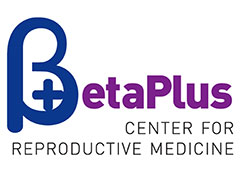After embryo transfer it is important to follow the instructions given upon the release from the facility because any failure to do so will diminish chances of pregnancy after IVF procedure. Prescribed drugs help the corpus luteum, producing progesterone and sustaining early pregnancy. It is known that the function of corpus luteum is weaker in ovulation induction procedure. As a support to corpus luteum usually natural progesterone is recommended. Sometimes dydogesterone is used. Progesterone and hCG injections are also a good choice. All other methods of supporting corpus luteum are still experimental and there is no valid proof they are more helpful than standard methods, pills and gels.
Traditionally the day of aspiration is considered the day 14 of the cycle. Accordingly, insemination is performed on day 14 of the cycle, whereas embryo transfer is carried out on days 17 or 19. This is used to calculate pregnancy later on, i.e. the day of aspiration is taken as full two weeks of pregnancy, and the date two weeks prior to aspiration as the day of the last menstrual period (as of which pregnancy is normally calculated).
The following table contains beta-hCG levels indicating pregnancy, depending on the number of days after the procedure:
| Days after aspiration or insemination (ovulation) | Average beta-hCG levels |
| 14 | 48 |
| 15 | 59 |
| 16 | 95 |
| 17 | 132 |
| 18 | 292 |
| 19 | 303 |
Average beta-hCG levels
These values are guidelines only as levels of beta-hCG vary greatly and results lower or significantly higher than these do not need to worry you. A positive test (varying from one lab to another, but usually higher than 0 or higher than 5) is a proof of a so-called biochemical pregnancy. Urine pregnancy tests have a sensitivity of 25-50 IU hCG and show positive results at the time when menstruation is expected. Biochemical pregnancies do not continue to develop in a certain number of cases and clinical pregnancy fails. This is more common with women older than 40.
In a normal pregnancy every 1.5-2 days levels of hCG in blood are doubled. Rise of hCG and progesterone levels in blood of over 80nmol/L are good indicators of clinically viable pregnancy. Clinical pregnancy is confirmed when ultrasound shows gestational sac in the uterus, with hCG levels usually above 1,000-1,500 IU/L. At the end of week 6 of the pregnancy (second week of menstrual absence), the beta-hCG level is above 6,000 IU/L, ultrasound shows an embryo a few millimeters in size and heart beats can be confirmed.
When clinical pregnancy is established, the risk of a miscarriage is the same as in normal pregnancies, about 10-15%. The risk of ectopic pregnancy in IVF is about 1-2%. A risk of a heterotopic pregnancy (one embryo develops in the uterus, while the other develops in the fallopian tube) is about 1%.
It is important to determine beta-hCG levels regardless a potential bleeding since bleeding can occur during early pregnancy. If 14 days after the aspiration (ovulation) beta-hCG is negative, there is no implantation. The procedure has failed.




